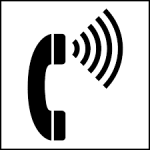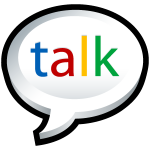Posted on 12 November 2015 Comments (0)
Tags: Appearance, Attitude, Behaviors, Body Language, communication, Culture, Facial Expressions, Interviewing skills, Leadership, Leadership Presence, Men's Appearance, Personal Development, Professional Development, Relationship Building, Social Etiquette, Speaking Skills, Women's Appearance
 Lesa Frances Kennedy, CEO of the International Speedway Corporation and Vice Chairwoman of NASCAR, answered the question: How do you hire?
Lesa Frances Kennedy, CEO of the International Speedway Corporation and Vice Chairwoman of NASCAR, answered the question: How do you hire?
“First impressions are so important in terms of fitting in on the team. The moment you walk in the door; you’re being observed. You may not know that, and it’s not anything formal, but I’ll get feedback. You read the body language of some of the people they’ve met, like a receptionist, and you can pick up very subtle cues about how they felt about that person. Was the person respectful?”
As you read this quote from the NYT Corner Office, Sunday, October 25th, consider the first impressions you create no matter who you meet. Does your first impression project confidence and approachability? Are you someone they want work with in the best of times as well as when problems arise?
 Beth Comstock made history by being GE’s first female vice chair. One piece of advice given to her by Jeff Emmelt early in her career was to ask: “Why aren’t you speaking up and voicing your opinion? It doesn’t do you or the company any good when you don’t.”
Beth Comstock made history by being GE’s first female vice chair. One piece of advice given to her by Jeff Emmelt early in her career was to ask: “Why aren’t you speaking up and voicing your opinion? It doesn’t do you or the company any good when you don’t.”
Beth is quoted in the article admitting a struggle with self-confidence. In working with clients, I have found that this is one of the main reasons people are not promoted or perceived as confident. Women have a bigger challenge because they seem to think that their opinion has to be right on target before they speak. Not so, because an opinion, even when not completely accepted, might start a path to a solution. Speaking up helps your audience to get to know you just as presenting your message is critical in being seen as a leader.
 Conference calls are a way of life in business, especially when dealing with global partners. Currently, many of my clients have clients who are not English speaking. We have developed a list of key points for English speaking folks to use when talking with those for whom English is not the native language, always:
Conference calls are a way of life in business, especially when dealing with global partners. Currently, many of my clients have clients who are not English speaking. We have developed a list of key points for English speaking folks to use when talking with those for whom English is not the native language, always:
1. Speak slowly.
2. Ask if he/she is the person handling this project.
3. Display patience on the conference call.
4. Repeat if there is silence after a question. (You may not have been understood.)
5. Be formal.
6. Use simple words.
7. Suggest you are following up instead of saying “We did not receive the papers.”
If possible, try to have at least one face to face meeting to get to know overseas clients. Establishing relationships is a very important lubricator for smooth business dealings, especially in the Asian culture.
 Often, a person is passionate about their work but may struggle to express that feeling in words. Clients who select me tend to be passionate about their work but want to be able to translate their passion verbally.
Often, a person is passionate about their work but may struggle to express that feeling in words. Clients who select me tend to be passionate about their work but want to be able to translate their passion verbally.
They are diligent, though, in writing what their work is about on paper and, at times, will even interview folks who champion them to help define their motivation.
This is not easy. It takes digging deep and using examples and stories and to explain why their work makes a difference. Step two is to practice by choosing and using impactful words that are easy to say. Bring clarity around the why, how and who. Clients that practice and practice then keep practicing become very capable at verbally expressing their passion.
My do’s and a f ew don’ts for giving an engaging presentation whether it is for small group of 25 or a group of 250:
ew don’ts for giving an engaging presentation whether it is for small group of 25 or a group of 250:
• For small audiences – always ask general enough questions to get multiple answers
• For all audiences – use a microphone or a lavaliere (just attended a session – no one could hear the speaker)
• Share a few relative stories and ask for confirmation (Has this happened to you?)
• Move toward the audience when you want to make a point
• Work both sides of the room
• Get the audience to move around at least once per hour
• Always have fun with the audience
• Do not stand in the way of the projector light
• Do not allow your volunteer stay in front of the projector light
Overall, set the presentation up as a win for the speaker as well as the audience. When situations happen, like starting late or dealing with a faulty projector remain calm, flexible and prepared.
 PowerPoint is a wonderful tool to use when making a presentation. It adds a visual context to your message and hopefully adds clarity to the point you are driving. At the same time, PowerPoint can confuse the message and become handicap to the speaker.
PowerPoint is a wonderful tool to use when making a presentation. It adds a visual context to your message and hopefully adds clarity to the point you are driving. At the same time, PowerPoint can confuse the message and become handicap to the speaker.
For a twenty minute talk, the maximum number of slides used would be 30 and most of them would be picture visuals you can talk to.
Years ago, I attended a presentation given by two CEOs. (Their companies were my clients at the time.) One CE0 had too many slides for a 45 minute presentation. Many of the slides were in small print and graphs that no one could make out. The other CEO, who spoke immediately after, only had one slide with visuals that transitioned in when he was making a point. The audience was much more engaged with the second CEO even though the points both CEOs were making were the same (albeit from different viewpoints).
Which presentation would you have liked to attend?
Posted on 19 March 2015 Comments (0)
Tags: Anna's Posts, Appearance, Attitude, Behaviors, Body Language, Career Builders, communication, Culture, Derailers, Interviewing skills, Leadership Presence, Men's Appearance, Personal Development, Professional Development, Relationship Building, Speaking Skills, Women's Appearance
 It is often said that our eyes are the window to the world. They are also are how folks read you. Eye contact is critical when first meeting someone because it shows engagement and that you are focused on what they are saying. It also will help you remember names and something about them.
It is often said that our eyes are the window to the world. They are also are how folks read you. Eye contact is critical when first meeting someone because it shows engagement and that you are focused on what they are saying. It also will help you remember names and something about them.
Eyes, when looking down, up, to the right or to the left, do not send a good message. In some cases, it shows nervousness and even deception in a reply.
 Simon O. Sinek is an author best known for popularizing the concept of “The Golden Circle” and to “Start With Why”, described by TED as “a simple but powerful model for inspirational leadership” It offers these seven tips to ensure you will have a dynamic presentation:
Simon O. Sinek is an author best known for popularizing the concept of “The Golden Circle” and to “Start With Why”, described by TED as “a simple but powerful model for inspirational leadership” It offers these seven tips to ensure you will have a dynamic presentation:
1. Do not talk right away, wait until the audience gives you their attention
2. It is about what you can give the audience
3. Have a compelling personal story
4. Focus on a friendly face
5. Don’t listen or look at naysayers
6. Talk much slower than you normally do
7. Always thank the audience
 Most our interactions, including final business transactions, take place on the phone. Speaking clearly and succinctly is very critical for many reasons. Your tone of voice is important in showing confidence and asking the appropriate questions.
Most our interactions, including final business transactions, take place on the phone. Speaking clearly and succinctly is very critical for many reasons. Your tone of voice is important in showing confidence and asking the appropriate questions.
Most importantly, you need to be heard. A good way to practice is by partnering with a colleague so you can both practice a range of voices, tones and pronunciations. Your phone voice is just as important as your visual presence.
Posted on 08 July 2014 Comments (0)
Tags: Anna's Posts, Attitude, Behaviors, Business Etiquette, Career Builders, Interviewing skills, Leadership, Listening, Marketing, Relationship Building, Speaking Skills

 I help clients prepare for “the interview” for a promotion or just a “look see” in some cases. Basic critical elements for the interviewee are dress, behavior (body language, facial expressions) and projecting confidence. However, the talking points and engaging the interviewer so they want to help you get promoted is just as, if not more so, important. You want to create a winning interview so you will be recommended, or at least be considered, for the next position. Also, ask probing questions. This way, for the second interview, you will be able to provide your insights on issues that are not common knowledge for the role.
I help clients prepare for “the interview” for a promotion or just a “look see” in some cases. Basic critical elements for the interviewee are dress, behavior (body language, facial expressions) and projecting confidence. However, the talking points and engaging the interviewer so they want to help you get promoted is just as, if not more so, important. You want to create a winning interview so you will be recommended, or at least be considered, for the next position. Also, ask probing questions. This way, for the second interview, you will be able to provide your insights on issues that are not common knowledge for the role.

 Lesa Frances Kennedy, CEO of the International Speedway Corporation and Vice Chairwoman of NASCAR, answered the question: How do you hire?
Lesa Frances Kennedy, CEO of the International Speedway Corporation and Vice Chairwoman of NASCAR, answered the question: How do you hire?












